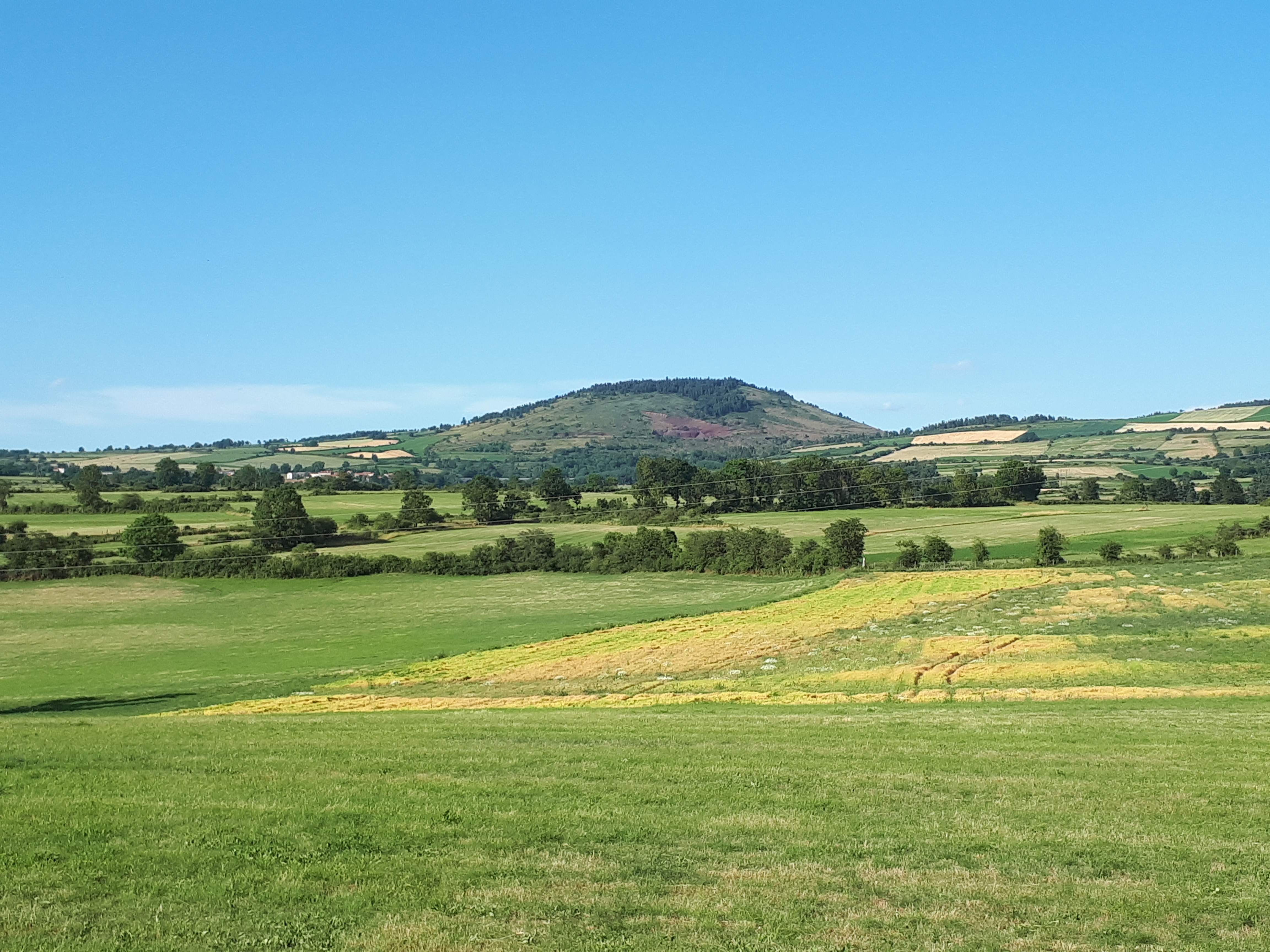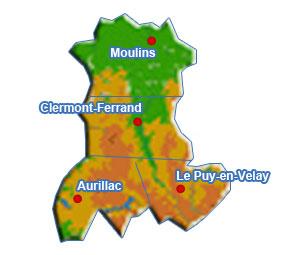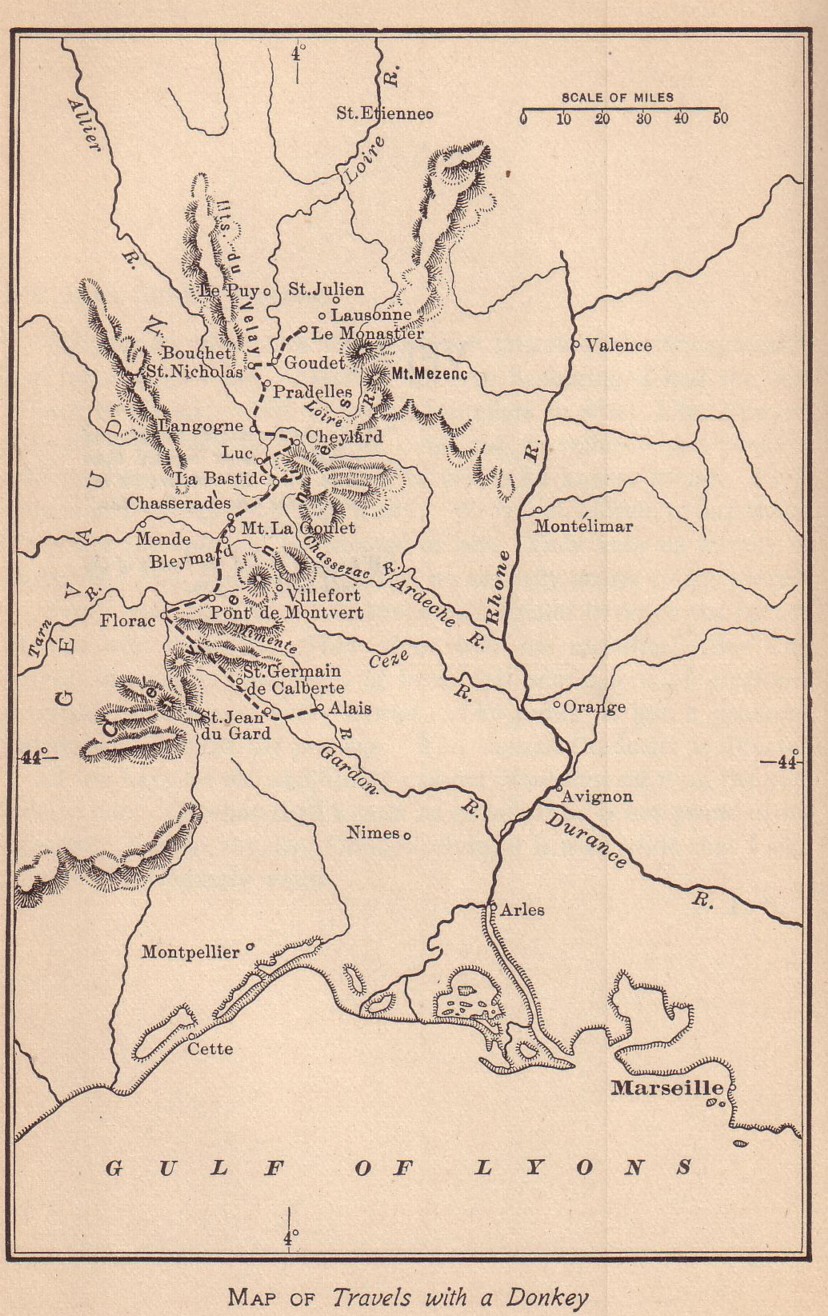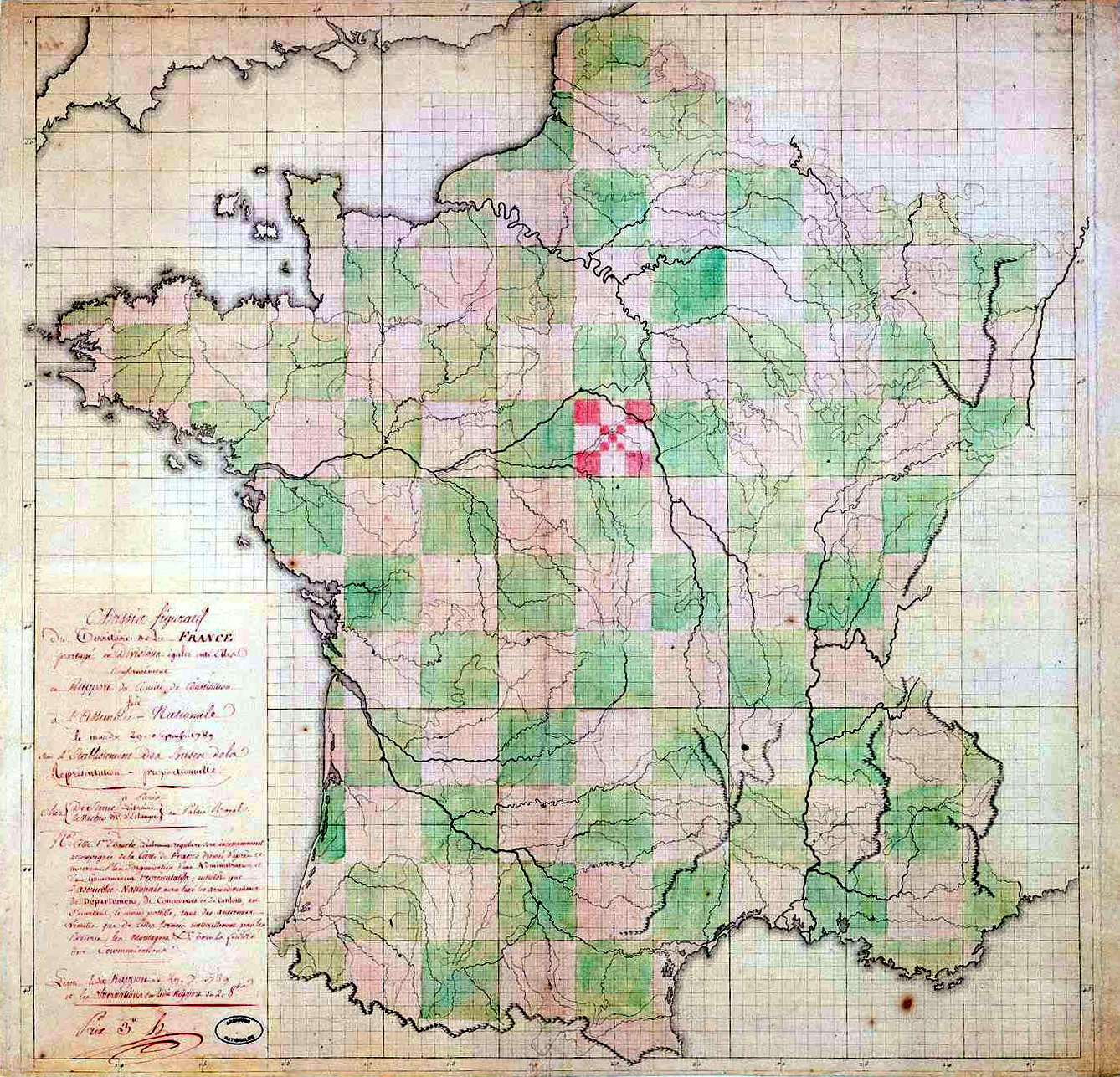|
Velay
Velay () is a historical area of France situated in the east Haute-Loire ''Département in France, département'' and southeast of Massif central, Massif Central. History Julius Caesar mentioned the vellavi as the subordinate of the arverni. Strabon suggested that they might have made secession from the arverni and Ptolemy located them as ''vellauni''. The country is well delimited by natural obstacles: Allier river in the south, Mount Boutières and Mézenc in the east, and Devès massif in the west. Devès has Celtic toponyms clearly suggesting an antic border (Fix from ''finis''; la Durande from Gaulish ''Equiranda'' meaning frontier). No explanation concerning the toponym, except 19th century naïve scholastic ones that connected the name to Proto-Indo-European language, PIE root ''wel'' (land of "well ... people") or even to the mythological ''Hel'' (“land or mountains of the hell” referring to the volcanic geology). Middle Ages In the early Middle Ages Velay wa ... [...More Info...] [...Related Items...] OR: [Wikipedia] [Google] [Baidu] |
Le Puy-en-Velay
Le Puy-en-Velay (, ; , before 1988: ''Le Puy'') is the Prefectures in France, prefecture of the Haute-Loire Departments of France, department in the Auvergne-Rhône-Alpes Regions of France, region of south-central France. Located near the river Loire, the city is famous for its Le Puy Cathedral, cathedral, for a Le Puy green lentil, kind of lentil, for its lace-making, as well as for being the origin of the ''Chemin du Puy,'' one of the principal origin points of the pilgrimage Routes of Santiago de Compostela in France, route of Santiago de Compostela in France. In 2021, the Communes of France, commune had a population of 18,629. History Le Puy-en-Velay was a major Diocese, bishopric by the early period of France in the Middle Ages, medieval France. Its foundation is largely legendary. According to a martyrology compiled by Ado of Vienne, published in many copies in 858, and supplemented in the mid-10th century by Gauzbert of Limoges, a priest named George accompanied a certa ... [...More Info...] [...Related Items...] OR: [Wikipedia] [Google] [Baidu] |
Haute-Loire
Haute-Loire (; or ''Naut Leir''; English: Upper Loire) is a landlocked department in the Auvergne-Rhône-Alpes region of south-central France. Named after the Loire River, it is surrounded by the departments of Loire, Ardèche, Lozère, Cantal and Puy-de-Dôme. In 2019, it had a population of 227,570;Populations légales 2019: 43 Haute-Loire INSEE its inhabitants are called ''Altiligériens'' in French (English : Altiligerians). The department, which has its in , covers the upper reaches of the Lo ... [...More Info...] [...Related Items...] OR: [Wikipedia] [Google] [Baidu] |
Languedoc
The Province of Languedoc (, , ; ) is a former province of France. Most of its territory is now contained in the modern-day region of Occitanie in Southern France. Its capital city was Toulouse. It had an area of approximately . History The Roman province of Gallia Narbonensis fell to the Visigothic Kingdom from the 5th to the 8th centuries. Occupied briefly by the Emirate of Córdoba between 719 and 759, it was conquered and incorporated into the Kingdom of the Franks by Pepin the Short in 759 following the Siege of Narbonne. The term Languedoc originated to describe a cultural region that was not necessarily politically unified. After the decline of the Carolingian Empire political rule fragmented into small territorial divisions. King John of England lost his holdings in northern Languedoc to Philip II of France. He visited the region in 1214 seeking the restoration of those lands. In the 13th century, the See of Rome challenged the area's spiritual beliefs, ... [...More Info...] [...Related Items...] OR: [Wikipedia] [Google] [Baidu] |
Vellavi
The Vellavii (Gaulish: *''Uellauī/Wellawī'') were a Gallic tribe dwelling around the modern city of Le Puy-en-Velay, in the region of the Auvergne, during the Iron Age and the Roman period. Name They are mentioned as ''Vellaviis'' (var. ''vellabiis'') by Caesar (mid-1st c. BC), ''Ou̓ellaoúioi'' (Οὐελλαούιοι, var. -άοιοι, -άϊοι) by Strabo (early 1st c. AD), ''Vellavi'' (var. ''velavi'') by Pliny (1st c. AD), ''Ou̓éllaunoi'' (Οὐέλλαυνοι, var. Οὐέλλενες) by Ptolemy (2nd c. AD), and as ''Velavorum'' in the '' Notitia Dignitatum'' (5th c. AD).'' Notitia Dignitatum'', oc 42:68., s.v. ''Vellavi''. The city of Le-Puy-en-Velay, attested ca. 400 AD as ''civitas Villavorum'' ('civitas of the Vellavii'), and the region of Velay Velay () is a historical area of France situated in the east Haute-Loire ''Département in France, département'' and southeast of Massif central, Massif Central. History Julius Caesar mentioned the vellavi ... [...More Info...] [...Related Items...] OR: [Wikipedia] [Google] [Baidu] |
Saint-Paulien
Saint-Paulien (; Auvergnat: ''Sant Pàulhan'') is a commune in the Haute-Loire department in south-central France. Population See also *Communes of the Haute-Loire department A commune is an alternative term for an intentional community. Commune or comună or comune or other derivations may also refer to: Administrative-territorial entities * Commune (administrative division), a municipality or township ** Communes of ... References Communes of Haute-Loire Gallia Aquitania {{HauteLoire-geo-stub ... [...More Info...] [...Related Items...] OR: [Wikipedia] [Google] [Baidu] |
Devès Massif
The Devès is a vast basalt plateau in the Velay mountains of the Massif Central, located in Haute-Loire, forming a natural region of France. It reaches its highest point at Mont Devès at an altitude of 1,421 meters. Toponomy Devès is an Occitan term that refers to a "forbidden forest, protected," meaning it is not exploited. Geography Location The Devès is bordered to the west by the upper Allier valley and the Margeride mountains, to the north by the Livradois mountains, to the northeast by the Meygal massif, and to the east by the upper Loire valley and the Vivarais mountains. Geology The Devès massif, which is more of a high plateau, is one of the three volcanic massifs of Velay, the other two being the Mézenc massif and the Meygal. It is the largest basalt plateau in the Massif Central. The first eruptions are dated to 6 million years ago, but most of the volcanic activity occurred between 3.5 and 0.6 million years ago, with two peaks at 1 and 2 mil ... [...More Info...] [...Related Items...] OR: [Wikipedia] [Google] [Baidu] |
Auvergne
Auvergne (; ; or ) is a cultural region in central France. As of 2016 Auvergne is no longer an administrative division of France. It is generally regarded as conterminous with the land area of the historical Province of Auvergne, which was dissolved in 1790, and with the now-defunct administrative region of Auvergne, which existed from 1956 to 2015. The region is home to a chain of volcanoes known collectively as the " chaîne des Puys". The volcanoes began forming about 70,000 years ago, and most have eroded, leaving plugs of hardened magma that form rounded hilltops known as puys. The last confirmed eruption occurred around 4040 BCE. Geography Auvergne is known for its mountain ranges and dormant volcanoes. Together the Monts Dore and the Chaîne des Puys include 80 volcanoes. The Puy de Dôme is the highest volcano in the region, with an altitude of . The Sancy Massif in the Monts Dore is the highest point in Auvergne at . The northern part is covered in hil ... [...More Info...] [...Related Items...] OR: [Wikipedia] [Google] [Baidu] |
Travels With A Donkey In The Cévennes
''Travels with a Donkey in the Cévennes'' (1879) is one of Robert Louis Stevenson's earliest published works and is considered a pioneering classic of outdoor literature. Background Stevenson was in his late 20s and still dependent on his parents for support. His journey was designed to provide material for publication while allowing him to distance himself from a love affair with an American woman of which his friends and family did not approve and who had returned to her husband in California. ''Travels'' recounts Stevenson's 12-day, solo hiking journey through the sparsely populated and impoverished areas of the Cévennes mountains in south-central France in 1878. The terrain, with its barren rocky heather-filled hillsides, he often compared to parts of Scotland. The other principal character is Modestine, a stubborn, manipulative donkey he could never quite master. It is one of the earliest accounts to present hiking and camping outdoors as a recreational activity. It al ... [...More Info...] [...Related Items...] OR: [Wikipedia] [Google] [Baidu] |
Département In France
In the administrative divisions of France, the department (, ) is one of the three levels of government under the national level ("territorial collectivity, territorial collectivities"), between the Regions of France, administrative regions and the Communes of France, communes. There are a total of 101 departments, consisting of ninety-six departments in metropolitan France, and five Overseas department and region, overseas departments, which are also classified as overseas regions. Departments are further subdivided into 333 Arrondissements of France, arrondissements and 2,054 Cantons of France, cantons (as of 2023). These last two levels of government have no political autonomy, instead serving as the administrative basis for the local organisation of police, fire departments, and, in certain cases, elections. Each department is administered by an elected body called a departmental council (France), departmental council ( , ). From 1800 to April 2015, these were called gene ... [...More Info...] [...Related Items...] OR: [Wikipedia] [Google] [Baidu] |
Duchy Of Aquitaine
The Duchy of Aquitaine (, ; , ) was a historical fiefdom located in the western, central, and southern areas of present-day France, south of the river Loire. The full extent of the duchy, as well as its name, fluctuated greatly over the centuries and at times comprised much of what is now southwestern (including Gascony) and central France. The territory originated in 507 as a constituent kingdom of the Frankish kingdom after the Salian Franks conquered Aquitaine following the Battle of Vouillé; its boundaries were ultimately a combination of the Roman provinces of . As a duchy, it broke up after the conquest of the independent Aquitanian duchy of Waiofar, going on to become a sub-kingdom within the Carolingian Empire. It was then absorbed by West Francia after the partition of Verdun in 843 and soon reappeared as a duchy under West Francia. In 1153, an enlarged Aquitaine pledged loyalty to the Angevin kings of England. As a result, a rivalry emerged between the French monar ... [...More Info...] [...Related Items...] OR: [Wikipedia] [Google] [Baidu] |
Julius Caesar
Gaius Julius Caesar (12 or 13 July 100 BC – 15 March 44 BC) was a Roman general and statesman. A member of the First Triumvirate, Caesar led the Roman armies in the Gallic Wars before defeating his political rival Pompey in Caesar's civil war, a civil war. He subsequently became Roman dictator, dictator from 49 BC until Assassination of Julius Caesar, his assassination in 44 BC. Caesar played a critical role in Crisis of the Roman Republic, the events that led to the demise of the Roman Republic and the rise of the Roman Empire. In 60 BC, Caesar, Marcus Licinius Crassus, Crassus, and Pompey formed the First Triumvirate, an informal political alliance that dominated Roman politics for several years. Their attempts to amass political power were opposed by many in the Roman Senate, Senate, among them Cato the Younger with the private support of Cicero. Caesar rose to become one of the most powerful politicians in the Roman Republic through a string of military victories in the G ... [...More Info...] [...Related Items...] OR: [Wikipedia] [Google] [Baidu] |






